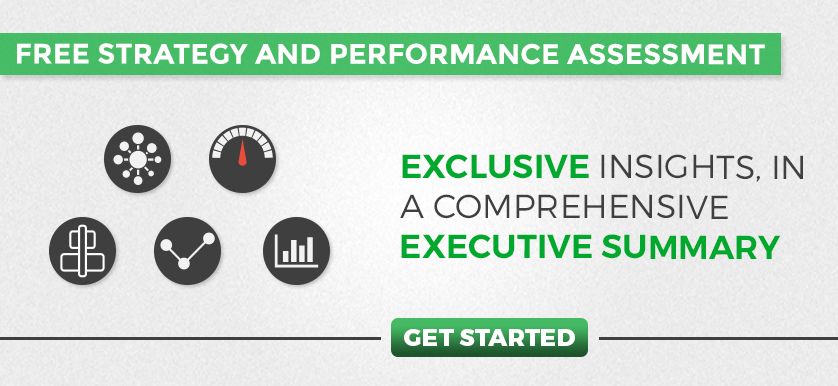The future of public service: key trends in strategy and performance management

Image source: kentoh from Getty Images | Canva
The public sector and government entities, especially in the UAE, tend towards excellence and global pioneering through participation in various excellence programs and awards and participation in measuring global competitiveness indicators. It has also become competitive with the private sector in the quality, efficiency, and excellence of providing services comparable to the quality and efficiency required by the highest international standards. The goal is to reach the highest levels of customer happiness,
Key trends
The public sector has gone a long way. Among the main directions it is treading are the following:
Future shaping. It is what is related to the possible and the preferred in the future, along with expectations and trends that have few possibilities but have significant impacts that can occur. There is a need to analyze the extent of their impact on government work, build future models, seize opportunities, and ensure strategic ability that will affect the operations and services of government entities as they work towards achieving customers’ and society’s happiness.
Government innovation in services and processes. When services are provided innovatively, it reduces the time of their provision and measures the added value from them. Innovation is the actual translation of creative ideas and transforming them into products, services, processes, and systems that interact with and serve society. It is necessary to measure the global innovation index, which measures the level of innovation at the level of different countries by studying a number of indicators that make up the overall index. It includes seven main criteria categories that represent innovation inputs and outputs at the state level: institutions, human capital and research, infrastructure, market development, business environment development, innovation outputs of knowledge and technology, and creative outputs.
Digital transformation. This refers to providing electronic and smart government services with a high degree of excellence, pioneering, comprehensiveness, and integration among government entities and interrelated and integrated systems to achieve the “one government” concept.
Metaverse and government use. This is a system that will provide many virtual spaces on the Internet and will also allow the integration of everyday life into virtual life. Metaverse will provide immersive and exciting experiences in various fields, such as education, health, tourism, travel, service provision, shopping, transportation, and others. This involves using advanced technologies, such as virtual and augmented reality, artificial intelligence, blockchain, cloud computing, 5G network, and other technologies. Such technology can make government administrative services efficient. For example, people can meet with virtual officials without visiting municipal offices or any government department.
Sustainability in the social, economic, and environmental fields. Programs, initiatives, and policies that support sustainability are implemented, such as applying and measuring performance indicators of the extent of the impact of operations on health, safety, and the environment. This should ensure minimizing negative impacts on society and the environment and contribute to the rationalization of energy, water, and other resources consumption.
The future of public services
Government services in the future will depend heavily on the provision of digital services that will be more efficient and will also rely on the standards and requirements of a single platform for customer data. An example is the digital identity (UAE PASS) adopted in the UAE. It is used as a primary and unified mechanism to obtain digital services for all categories of customers.
The future of government services as stated in the global star system for rating services, issued by the Prime Minister’s Office in the Ministry of Cabinet Affairs and the future in the United Arab Emirates, represented by the Emirates Program for Excellence in Government Service, as this integrated system is the first of its kind in the world. The Emirates Program for Excellence in Government Service was launched [2] in the United Arab Emirates, it sets a world-class standard that helps government and private entities measure, improve and transform the field of service delivery. This program aims to improve the quality of government and private services by focusing on customer-centric services, employee happiness, and operational efficiency to provide services at a seven-star level.
Strategic planning will play an important role in assessing the quality of government services. This happens through the awareness of senior leadership, in participating in strategic planning that focuses on developing services, linking it to strategic objectives, and supporting the government entities’ strategy to improve customer experience. In addition, these strategic goals related to services must be measured and monitored through efficient and effective performance indicators, such as: the percentage of services’ customer happiness, the average time taken to provide the service, and the average waiting time to obtain the service.
The most important characteristic of government entities is how they provide services quickly and efficiently. For this purpose, they must proactively adopt advanced technologies, such as chatbots, artificial intelligence, big data analytics, and the Internet of Things, to support the provision and management of services to continue improving customer experience and reaching the highest levels of happiness for them.
In this field, government entities should provide a central database for all customer data. It should be possible to securely access the central database for customers from all service delivery channels and to manage the security of this data. There should be special security measures to deal effectively with data breaches if they occur and training for employees on how to proactively reduce security breaches. In addition, government entities must evaluate their electronic and digital security and build a culture of enhancing the importance of data privacy and security, recognize the possibility of using the Secure Sockets Layer (TLS) protocol, and ensure secure access to service and electronic payment procedures through digital channels.
Best practices
One of the best practices that we recommend in strategic planning for government entities is strategic planning based on the Balanced Scorecard developed by Norton and Kaplan: It is a framework for translating the organization’s vision into a set of performance indicators covering the following four perspectives: financial aspect, customers, internal process, learning, and growth. Through this system, the organization monitors its current performance (financial, customer satisfaction, and business results) as well as its efforts towards developing operations, motivating and educating employees, enhancing information systems, and honing their ability to learn and develop.
It is considered an administrative system that enables the organization to clarify its vision and strategic goals and translate them into reality. It is an auxiliary tool used to measure the performance of organizations in order to lead them to continuous development and improvement as it focuses on gaps in performance and alerts work teams and senior management.
The Norton and Kaplan methodology for managing and executing strategy consists of six main steps:
- Preparing and developing the strategy: This includes benchmarking with best practices, formulating the vision, mission and values, conducting internal and external analysis, identifying the value gap and defining the vision, defining the change agenda, and formulating the strategy.
- Translating the strategy: It refers to defining the strategic pillars and objectives, the indicators and targets, the strategic initiatives, the responsibilities, and the general framework for the process of translating the strategy.
- Cascading and alignment of the strategy: This is about distributing objectives according to roles to the main and supportive organizational units, communicating the strategy for all employees, aligning the strategy with the individual performance of the employees, aligning with incentives, aligning the strategy with external parties and partners.
- Developing the main processes and linking the strategy to the institution’s budget and operations to ensure implementation: This involves defining priorities for strategic operations, using processes and driving models to activate the strategy, creating an operations dashboard, integrating financial planning and resource capabilities, managing initiatives, integration with and planning for intangible properties.
- Institutional review and learning by transforming the strategy into a continuous process and establishing a formal performance-based follow-up to the strategy: This is achieved by conducting strategy review meetings, and conducting operational processes review meetings).
- Testing and adaptation: This means monitoring and evaluating the strategy and adapting to the strategy based on the results achieved. It includes testing cause-and-effect relationships using data analytics, testing the robustness and solidity of the strategy, and using business intelligence and big data).
Challenges and successes
Among the biggest and most important challenges that government entities face during the implementation and usage of a performance management system are:- The inability to obtain the information needed by government entities from the performance measurement process. The solution is to adopt performance indicators that are closely related to the strategic objectives. Measuring performance indicators that are not linked to the objectives is a waste of time.
- Lack of results and data to help make decisions. The solution is to establish a reliable database to obtain the data based on which accurate performance is measured to help make sound decisions at the right time.
- The inability to take effective measures to achieve goals. The solution lies in the use of analysis and improvement tools that lead to the root of the problem, based on which effective measures are taken to improve performance and achieve goals.
- Not knowing what exactly is important to measure. The solution is to measure a few indicators that serve the purpose of achieving the goals.
- Not knowing the purpose of the measurement and that the indicators are meaningless. The solution is to adopt the performance indicator card. From the outset, the purpose of its measurement are determined.
- Employees refuse to be held accountable for performance. The solution is not to punish employees for bad performance. Motivate and honor outstanding performance and good results.
- No improvement in performance. The solution is to measure performance indicators over long periods of time to follow up on the improvement in performance in a phased manner. Acknowledge the possibility of taking improvement measures before the end of the performance management cycle.
- Indicators are imposed on employees and are not discussed with them. The solution lies in the participation of employees in setting performance indicators and defining the responsibility of each of them for the details of the indicator, such as collecting data, monitoring improvement, measuring the indicator, and developing improvement initiatives.
In terms of building performance- and data-driven culture in the public sector, it is necessary to develop a culture of reliance on shared and open data and to measure indicators of the extent of the participation of government departments.
For the success of any performance management system:- Performance must be monitored, evaluated, and adapted to the strategy based on the results achieved;
- The testing of cause-and-effect relationships must use data analytics;
- Artificial intelligence and big data must be employed.
To succeed as a leader in a government entity, he or she should have behavioral competencies, the set of knowledge, skills, and behaviors necessary to achieve effective performance. These competencies play an important role in employee performance and work teams for the tasks assigned to them and often appear when employees interact with each other and with clients.
Behavioral competencies include core and leadership competencies. Successful leaders must have leadership spirit, futuristic, achievement, and influence. The leadership spirit refers to empowering employees and delegating powers, promoting accountability and responsibility, setting a role model, and opening up to the world. The efficiency of the future requires the leader to see the future, be an innovator and a catalyst for radical change, be familiar with advanced technology, and be a continuous and lifelong learner. Meanwhile, achievement and impact competence means being flexible and quick, making smart, effective, and efficient decisions, and being focused on the higher goals of the government and achieving results.
This article was written by Dr. Hisham Ahmad Kayali and was first published in the 24th printed edition of PERFORMANCE Magazine. You can get a free digital copy from the TKI Marketplace here or purchase a print copy from Amazon for a nominal fee here.

Tags: Government performance, Performance Management, Public sector, public service, Strategy planning





